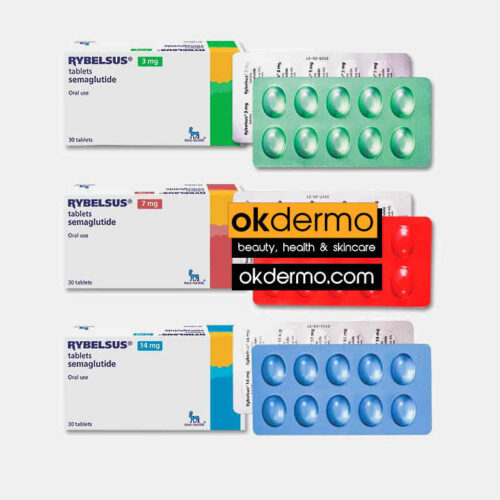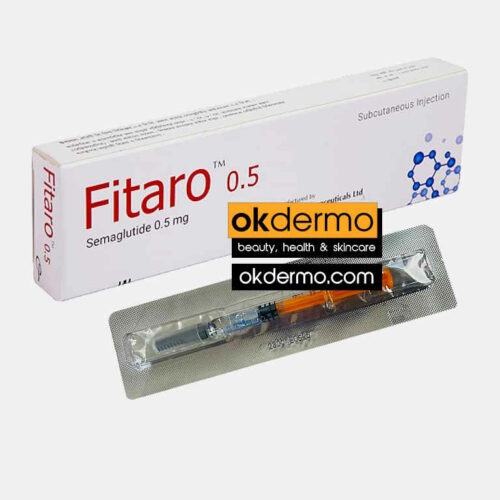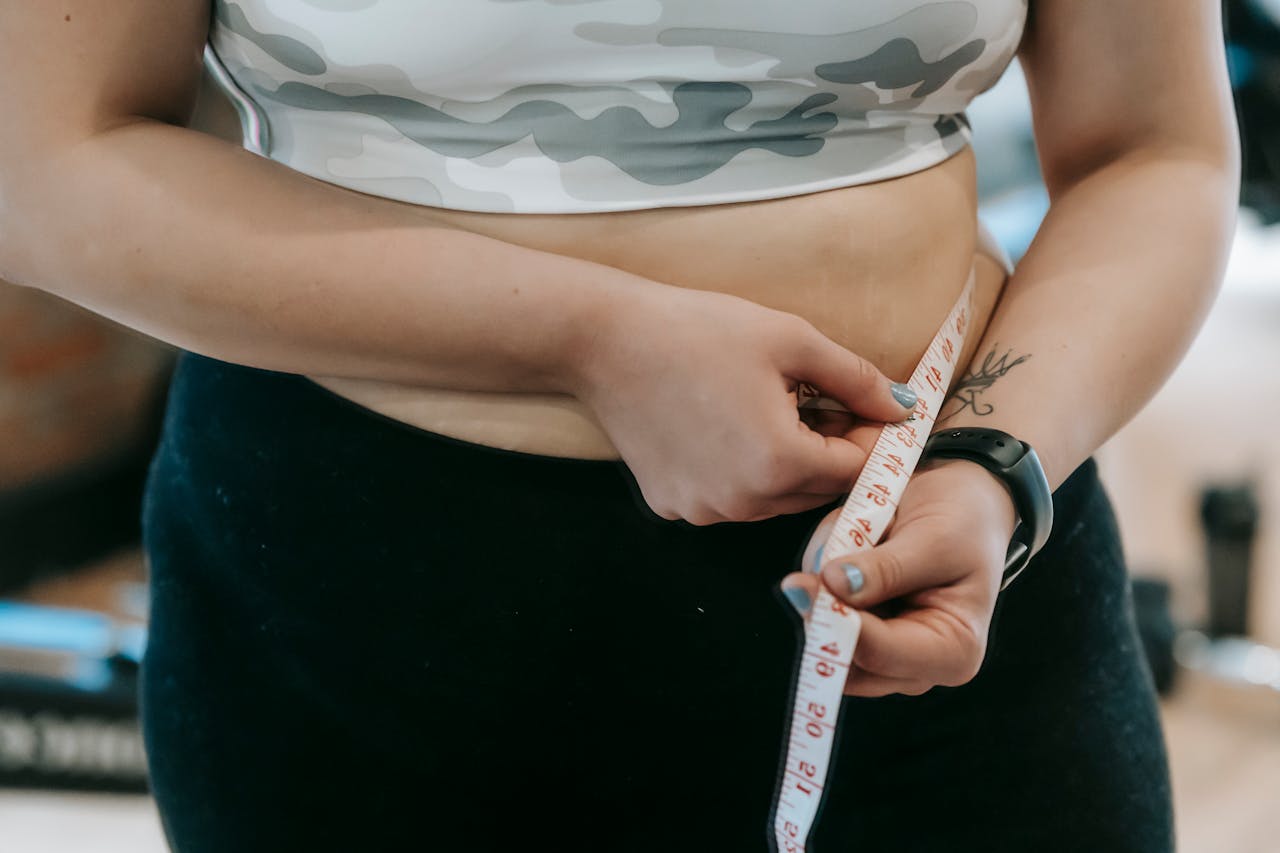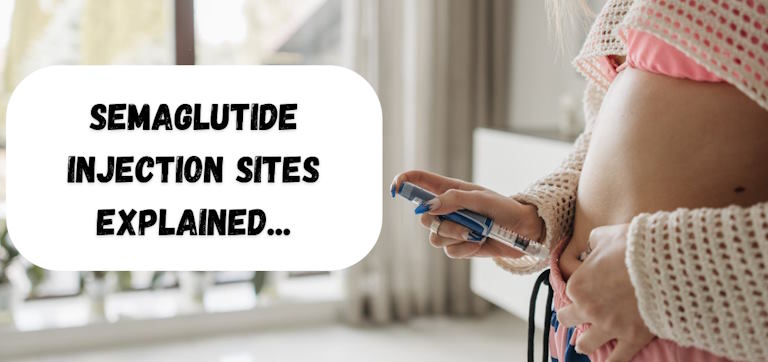Where to Inject Semaglutide for Weight Loss: Dosage, Techniques, and Best Practices
Table of Contents
Semaglutide, a glucagon-like peptide-1 (GLP-1) receptor agonist, is increasingly recognized for its efficacy in promoting weight loss. Originally approved for the management of type 2 diabetes under brand names like Ozempic, semaglutide has demonstrated significant weight reduction benefits in clinical trials, leading to its approval for weight management in individuals without diabetes.
Understanding where to inject semaglutide for optimal results is crucial for maximizing its efficacy and minimizing potential side effects. This guide will provide detailed information on the recommended injection sites and techniques, ensuring that both diabetic and non-diabetic patients can achieve the best possible outcomes from their treatment.
Semaglutide for Weight Loss
Semaglutide is a glucagon-like peptide-1 (GLP-1) receptor agonist, which means it mimics the action of the GLP-1 hormone. GLP-1 is naturally produced in the intestines and plays a crucial role in regulating appetite and blood sugar levels.
When semaglutide binds to GLP-1 receptors, it stimulates insulin secretion in response to high blood glucose levels, slows gastric emptying, and reduces appetite by acting on brain regions involved in hunger and satiety.
-

Rybelsus® Semaglutide Tablets
Semaglutide 3mg / 7mg / 14mg
Size: 30 Tablets
Brand name: Rybelsus, Ozempic, Wegovy
From USD $345.00 Select options -

Fitaro® Semaglutide Subcutaneous Injection
Semaglutide 0.25mg / 0.50mg / 1mg / 1.7mg / 2.4mg
Size: 1 Pre-Filled Injection Syringe
Brand name: Ozempic, Wegovy
From USD $141.00 Select options
Benefits of Semaglutide for Weight Loss
The benefits of semaglutide for weight loss are significant and well-documented. Key benefits include:
- Reduced Appetite: By acting on appetite-regulating areas of the brain, semaglutide helps reduce overall calorie intake.
- Enhanced Satiety: Patients often feel fuller faster and for longer periods, which helps to decrease food consumption.
- Improved Glycemic Control: For patients with type 2 diabetes, semaglutide not only aids in weight loss but also helps in controlling blood glucose levels.
- Sustainable Weight Loss: Clinical trials have shown that patients using semaglutide experience significant weight loss that is more sustainable over long periods compared to other weight loss medications.

Efficacy of Semaglutide for Weight Loss
Clinical studies have been pivotal in demonstrating the efficacy of semaglutide for weight loss. In the STEP (Semaglutide Treatment Effect in People with Obesity) trials, participants treated with semaglutide experienced an average weight loss of approximately 15% of their body weight over 68 weeks.
These trials included individuals with obesity or overweight with at least one weight-related condition, such as hypertension or dyslipidemia, and showed that semaglutide was significantly more effective than placebo and other comparators.
Recommended Dosage of Semaglutide for Weight Loss
The standard dosing schedule for semaglutide when used for weight loss begins with a low dose that is gradually increased over time to minimize potential side effects such as nausea. The typical dosing regimen is as follows:
- Initial Dose: 0.25 mg once weekly for the first four weeks. This initial dose is not intended for weight loss but rather to help the body acclimate to the medication.
- Dose Increase: After four weeks, the dose is increased to 0.5 mg once weekly. This dose is maintained for another four weeks.
- Further Increase: If well-tolerated, the dose can be increased to 1 mg once weekly. This dose is usually maintained for four weeks.
- Maintenance Dose: For optimal weight loss, the dose can be increased to 1.7 mg once weekly, followed by a final increase to the full maintenance dose of 2.4 mg once weekly. This dose is maintained long-term for sustained weight loss.
Incremental Dosage Adjustments Based on Patient Response
Adjusting the dosage of semaglutide is essential to balance efficacy and tolerability. If a patient experiences significant side effects, such as severe nausea or vomiting, the healthcare provider may choose to delay dosage increases or maintain the current dose for a longer period before increasing.
Conversely, if the patient is tolerating the medication well but not achieving the desired weight loss, the provider might consider a more rapid escalation of the dose.
Dosage Chart for Semaglutide
Below is a detailed dosage chart outlining the typical progression of semaglutide dosage for weight loss:
| Weeks | Dose | Notes |
| 1-4 | 0.25 mg | Initial dose to help the body acclimate |
| 5-8 | 0.5 mg | Increased dose for further acclimatization |
| 9-12 | 1.0 mg | Intermediate dose for gradual adjustment |
| 13-16 | 1.7 mg | Higher dose for enhanced weight loss |
| 17+ | 2.4 mg | Maintenance dose for sustained weight loss |
Administration of Semaglutide
Semaglutide is administered via subcutaneous injection, which means the medication is injected into the fatty tissue just beneath the skin. This method allows for slow and steady absorption of the drug into the bloodstream, ensuring consistent therapeutic effects.
To perform a subcutaneous injection, the patient typically uses a prefilled pen device designed for ease of use. The process involves selecting an appropriate injection site, cleaning the area with an alcohol swab, and using the pen to inject the medication into the subcutaneous tissue.
Proper injection technique is crucial to maximize the efficacy of semaglutide and to minimize the risk of complications such as infections, bruising, or incorrect dosing. Key points include:
- Hygiene: Always wash hands thoroughly and use a new needle for each injection to prevent infections.
- Injection Angle: Insert the needle at a 90-degree angle to ensure it reaches the subcutaneous tissue.
- Rotation of Sites: Rotate injection sites within the same general area to avoid lipodystrophy (fatty tissue changes) and to ensure even absorption of the medication.
Best Injection Sites for Semaglutide
The best places to inject semaglutide, including Ozempic for weight loss, are areas with sufficient fatty tissue where the medication can be effectively absorbed. The most common injection sites are:
- Abdomen: Preferred for its ample fatty tissue and ease of access.
- Thigh: Another convenient site, especially for patients who may have limited abdominal space.
- Upper Arm: Less commonly used but still an effective option, typically requiring assistance for accuracy.
Abdomen
The abdomen is one of the most recommended sites for injecting semaglutide due to its accessibility and large surface area.
Caption- ‘’How to inject semaglutide video’’
Step-by-Step Guide to Injecting in the Abdomen:
- Choose the Site: Select an area at least two inches away from the navel to avoid sensitive tissues and blood vessels.
- Clean the Area: Use an alcohol swab to disinfect the chosen site and let it dry.
- Prepare the Pen: Remove the pen cap, attach a new needle, and perform an air shot to ensure the needle is primed.
- Pinch the Skin: Gently pinch a fold of skin between your thumb and forefinger.
- Inject: Insert the needle at a 90-degree angle into the pinched skin fold.
- Administer the Dose: Press the injection button and hold it down for 5-10 seconds to ensure the full dose is delivered.
- Remove the Needle: Pull the needle out and dispose of it safely in a sharps container.
Thigh
The thigh is another effective injection site, offering easy access and a sufficient area for rotation.
Instructions for Injecting in the Thigh:
- Choose the Site: Select the front or outer part of the thigh, halfway between the knee and hip.
- Clean the Area: Disinfect the site with an alcohol swab and let it dry.
- Prepare the Pen: Attach a new needle and perform an air shot.
- Pinch the Skin: Pinch a fold of skin at the injection site.
- Inject: Insert the needle at a 90-degree angle into the pinched skin fold.
- Administer the Dose: Press and hold the injection button for 5-10 seconds.
- Remove the Needle: Withdraw the needle and dispose of it in a sharps container.
Upper Arm
The upper arm is a viable injection site, though it may require assistance for proper administration.
Instructions:
- Choose the Site: Use the outer part of the upper arm where there is more fatty tissue.
- Clean the Area: Disinfect with an alcohol swab.
- Prepare the Pen: Attach a new needle and perform an air shot.
- Pinch the Skin: Pinch the skin at the injection site.
- Inject: Insert the needle at a 90-degree angle.
- Administer the Dose: Press and hold the injection button for 5-10 seconds.
- Remove the Needle: Pull out the needle and dispose of it properly.
Specific Considerations for Non-Diabetics
While semaglutide is traditionally used for managing type 2 diabetes, its approval for weight loss in non-diabetic patients requires careful consideration of dosage and administration.
Dosage
The dosage regimen for non-diabetic individuals generally follows the same incremental approach as for diabetic patients:
- Initial Dose: 0.25 mg once weekly for the first four weeks.
- Intermediate Dose: Increase to 0.5 mg once weekly for the next four weeks.
- Further Increase: If tolerated, the dose is increased to 1.0 mg once weekly for another four weeks.
- Higher Dose: Gradually increase to 1.7 mg once weekly for four weeks.
- Maintenance Dose: Finally, increase to the full maintenance dose of 2.4 mg once weekly.
For non-diabetic patients, the primary goal is weight loss rather than blood glucose control. Therefore, the focus is on achieving and maintaining the highest tolerable dose that supports significant weight reduction.
Monitoring and Managing Potential Side Effects
Non-diabetic patients should be closely monitored for potential side effects, especially during the initial dose escalation phase. Common side effects include nausea, vomiting, diarrhea, and constipation. Here are some strategies to manage these side effects:
- Gradual Dose Escalation: Following the recommended dose escalation schedule helps minimize gastrointestinal discomfort.
- Hydration: Ensuring adequate hydration can alleviate some gastrointestinal symptoms.
- Diet Adjustments: Eating smaller, more frequent meals and avoiding high-fat foods can help reduce nausea.
- Medications: Over-the-counter remedies for nausea and antacids may be used as advised by a healthcare provider.
Patients should report any severe or persistent side effects to their healthcare provider, who may adjust the dosage or provide additional treatments to manage symptoms. Regular follow-ups are crucial to assess the patient’s response to the medication and to make necessary adjustments.
Conclusion
In conclusion, semaglutide is a highly effective medication for weight loss, benefiting both diabetic and non-diabetic patients. Proper administration, including selecting the right injection sites and adhering to a structured dosing schedule, is essential for maximizing its efficacy and minimizing side effects. For non-diabetic patients, tailoring the dosage and closely monitoring for adverse effects ensures a safe and successful weight loss journey.
FAQs
-
How many units is 2 mg semaglutide?
The number of units in 2 mg of semaglutide varies based on the specific pen device used. Typically, 2 mg is delivered in one injection from a pen calibrated for that dose. Check your pen’s instructions or consult with your healthcare provider for exact details.
-
Is Ozempic in the thigh better than the stomach?
Both the thigh and the stomach are effective sites for injecting Ozempic (semaglutide). The stomach is often preferred due to easier access and less discomfort, but the thigh is a viable alternative. The choice depends on personal preference and convenience.
-
What happens if you inject semaglutide into muscle?
Injecting semaglutide into muscle instead of subcutaneous tissue can affect the absorption and efficacy of the medication, potentially leading to increased side effects or reduced effectiveness. Always aim for subcutaneous injection in the fatty tissue.
-
How to maximize weight loss on semaglutide?
To maximize weight loss on semaglutide, follow your prescribed dosing schedule, maintain a healthy diet, engage in regular physical activity, stay hydrated, and adhere to proper injection techniques. Regular follow-ups with your healthcare provider can also help optimize your treatment plan.
References
- Smits MM, Van Raalte DH. Safety of Semaglutide. Front Endocrinol (Lausanne). 2021 Jul 7;12:645563. doi: 10.3389/fendo.2021.645563. Erratum in: Front Endocrinol (Lausanne). 2021 Nov 10;12:786732. PMID: 34305810; PMCID: PMC8294388.
- Davies M, Færch L, Jeppesen OK, Pakseresht A, Pedersen SD, Perreault L, Rosenstock J, Shimomura I, Viljoen A, Wadden TA, Lingvay I; STEP 2 Study Group. Semaglutide 2·4 mg once a week in adults with overweight or obesity, and type 2 diabetes (STEP 2): a randomised, double-blind, double-dummy, placebo-controlled, phase 3 trial. Lancet. 2021 Mar 13;397(10278):971-984. doi: 10.1016/S0140-6736(21)00213-0. Epub 2021 Mar 2. PMID: 33667417.
- Rubino DM, Greenway FL, Khalid U, O’Neil PM, Rosenstock J, Sørrig R, Wadden TA, Wizert A, Garvey WT; STEP 8 Investigators. Effect of Weekly Subcutaneous Semaglutide vs Daily Liraglutide on Body Weight in Adults With Overweight or Obesity Without Diabetes: The STEP 8 Randomized Clinical Trial. JAMA. 2022 Jan 11;327(2):138-150. doi: 10.1001/jama.2021.23619. PMID: 35015037; PMCID: PMC8753508.
- Hunter J. Subcutaneous injection technique. Nurs Stand. 2008 Jan 30-Feb 5;22(21):41-4. doi: 10.7748/ns2008.01.22.21.41.c6418. PMID: 18300658.
Post by:
Dr.Marcella Jiovanni
Health and Beauty Expert
“Marcella Jiovanni actively promotes the importance of maintaining healthy skin, she envisions the future of dermatology as moving away from pure medical, pharmacological dermatology and flowing more toward a holistic approach to wellness and skincare.”


















